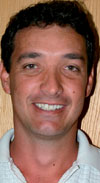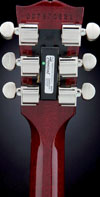
Africa
Motorola has been selected by Warid Telecom Uganda to design and deploy an 802.16e WiMAX network in Uganda. Initial deployment, which is said to be progressing rapidly, is due for completion by the end of 2007, enabling residential and enterprise voice and data connectivity services such as voice over IP (VoIP) and virtual private network (VPN).
Inala Technologies has announced the opening of a new branch office in KwaZulu-Natal. Jannie van Rensburg will be running the Inala Durban branch and as such, Inala's full range of services can now be accessed in the KwaZulu-Natal region.

Overseas
Business
SanDisk recently opened its production facility in Shanghai, the company's first in the People's Republic of China. Based in Zizhu Industrial-based Science Park, SanDisk Semiconductor (Shanghai) (SDSS) is expected to play a critical role in SanDisk's worldwide operations as the plant will focus on the assembly and test of its Flash memory products for mobile and other consumers in markets worldwide. SanDisk's worldwide operations function will also reside at the Shanghai facility. The production capacity of SDSS is expected to meet approximately 30% of SanDisk's System-in-Package products projected global demand.
RF Micro Devices (RFMD) has announced plans to expand its compound semiconductor manufacturing capacity to support growth expectations in the company's cellular and multimarket product groups. In the cellular handset market, the increasing adoption of highly integrated, multichip transmit modules and the migration to 3G multimode devices are expected to drive increased demand for RFMD's GaAs pHEMT and GaAs HBT. These favourable market trends are expected to underpin a five-year compound annual growth rate of greater than 20% from 2007 to 2012 in the market for cellular front ends. Additionally, in markets served by RFMD's multimarket products group, it is anticipated the migration to 802.11n (GaAs HBT and GaAs pHEMT) and the increasing adoption of WiMAX (GaAs HBT and GaN) will be among the primary drivers of increased compound semiconductor content and accelerated market growth.
International Rectifier announced the resignation of Dr Alex Lidow as chief executive officer and as a director, effective immediately. Don Dancer continues as the company's acting chief executive officer; he has served in that position since 28 August, 2007.
Micron Technology has announced results of operations for its 2007 fiscal year and fourth quarter, which ended 30 August, 2007. For the fourth quarter of fiscal 2007, the company incurred a net loss of $158 million on net sales of $1,4 billion, which compares to a net loss of $225 million on net sales of $1,3 billion for the third quarter. For the 2007 fiscal year, the company incurred a net loss of $320 million, or $0,42 per diluted share, on net sales of $5,7 billion, which compares to net income of $408 million, or $0,57 per diluted share, on net sales of $5,3 billion for the prior fiscal year. The company blamed the poor results on depressed average selling prices for memory products.
Maxim announced that the US Securities and Exchange Commission has denied the company's appeal to stay Nasdaq's decision to suspend and delist the company's common stock. This decision terminates the interim stay of Nasdaq's ruling that was put in place by the SEC on Tuesday, 25 September, 2007 to allow the SEC more time to fully consider the appeal. Maxim's common stock was suspended from trading on Nasdaq on 2 October and subsequently delisted. The company anticipates that its common stock will be quoted on the Pink Sheet Electronic Quotation Service automatically and immediately after Nasdaq suspends trading.
Microchip has announced its preliminary financial results for the second quarter of fiscal 2008 ending 30 September, 2007. It expects net sales to be approximately $258 to $259 million, which is down approximately 2,0% sequentially from net sales of $264,1 million in the first quarter of fiscal 2008. Earnings per diluted share on a GAAP basis is expected to be approximately 35 cents. For the September quarter of fiscal 2008, Microchip expects to be able to sustain near record level gross margins of approximately 60,4%.
Continuing its move towards a 'fab lite' manufacturing strategy, Atmel has announced that it has entered into separate agreements with TSMC (Taiwan Semiconductor Manufacturing Company) and Highbridge Business Park for the sale of its eight-inch wafer fabrication equipment and related property located in the United Kingdom. The sale is subject to customary closing conditions, including a comprehensive consultation exercise with employees in accordance with best United Kingdom employment relations practice. Under the terms of the agreements, TSMC has agreed to purchase Atmel's eight-inch wafer fabrication equipment, and Highbridge Business Park has agreed to purchase the North Tyneside land and buildings for a combined total of $124 million in cash.
Companies
In an effort to ensure that mobile WiMAX wireless products work well together and with other products globally, Intel, Nokia and Nokia Siemens Networks have announced that they are testing interoperability across Intel's forthcoming WiMAX silicon for laptops and mobile Internet devices, Nokia WiMAX devices and Nokia Siemens Networks WiMAX infrastructure equipment. Nokia also said it will use Intel's WiMAX silicon product, which is codenamed 'Baxter Peak' and designed specifically for mobile Internet and consumer electronic devices, in its forthcoming Nokia Nseries Internet Tablets, expected to be among the very first WiMAX-enabled open Internet devices expected to ship in 2008.
Sony and Qimonda have signed an agreement to found the joint venture Qreatic Design. The scope of the joint venture is the design of high-performance, low power, embedded and customer specific DRAMs for consumer and graphic applications. According to the agreement, the 50:50 joint venture is intended to start with up to 30 specialists from Sony and Qimonda, bringing together their first-class engineering expertise for the mutual benefit of both companies. Qreatic Design, which will be located in Tokyo, Japan, is planned to start operations by the end of the calendar year, subject to regulatory approvals and other closing conditions, and to substantially expand its capacities by hiring additional designers.
Nokia Siemens Networks (NSN) and IBM have signed an agreement including the transfer of specific parts of Research and Development Centre activities for four Business Lines of the Service Core and Applications Business Unit to a subsidiary of IBM. Upon closing of this transaction, expected to take place by the beginning of December 2007, up to 235 NSN employees located in Munich and Berlin will become part of the IBM organisation. Through this agreement NSN will leverage IBM's global network and experience as one of the world's foremost R&D organisations, investing more than $6 billion in 2006 and with 14 years of patent leadership.
The European Commission has launched formal antitrust proceedings against Qualcomm, in response to complaints first lodged in 2005 by Matsushita, Nokia, Broadcom, NEC, Texas Instruments and Ericsson that Qualcomm's licensing for third-generation mobile telephones broke competition rules. The complainants said at the time it charged the same for using its patents for new technology as it did for an older system, even though its patents account for a far smaller percentage of the new system. The complainants also allege that overly high royalties could push up handset prices for consumers, hamper development of the 3G standard and lead to future problems with fourth-generation mobile phone technology, the Commission said.
Motorola has secured two contracts for WiMAX network infrastructure from Taiwan's Far EasTone Telecom (FET) as part of the operator's role in the national M-Taiwan project. FET is one of Taiwan's largest 2G/3G telecom operators, with more than 6,4 million subscribers - about 33% share of the local wireless mobile market. FET is also a key player in the Taiwanese government's M-Taiwan project, an initiative to create a standards-compliant environment supporting services, education and entertainment on a national level.
CEVA, a licensor of silicon intellectual property (SIP) platform solutions and DSP cores for mobile, consumer electronics and storage applications, has announced that NXP Semiconductors has chosen the CEVA-Teak DSP core for its highly integrated ultra low-cost single-chip solutions targeting low-cost and entry-level handset designs for emerging markets. NXP's ultra low cost single-chip solutions, PNX4901 and PNX4903, feature fully functional and completely integrated single-chip phone solutions. These GSM/GPRS solutions provide complete system-level operation in a single monolithic IC.
Broadcom recently announced that it has expanded its relationship with Samsung Electronics to include advanced 3G cellular solutions for a new series of Samsung mobile handsets that are now available. Broadcom launched its first generation 3G cellular baseband technology with Samsung over a year ago with the SGH-Z220, and the new handsets leverage the companies' prior joint investment. The new Samsung 3G mobile phones are now shipping to leading cellular operators in multiple countries in Europe, Asia, Africa, Australia and elsewhere.
Infineon Technologies and Jungo have announced a partnership to deliver production-ready, carrier-grade reference designs for the multiservice residential gateway market. The partnership enables customers to offer complete solutions for operator-specific products based on a pre-integrated, carrier-ready software platform from Jungo and Infineon's communications chips. Furthermore, it also helps significantly reduce the customer's time-to-market by shortening in-house design by up to 50%. The new design is available for ADSL2/ 2+ and VDSL solutions.
Industry
Despite some inventory issues in the wireless market that occurred during the first half of 2007, this year's wireless revenue is working its way toward the $40 billion mark, according to Databeans. Regions contributing most notably are China, with over 17% share of consumption, Europe with 19% share as a whole, and Japan with 15% share. The transition of the wireless industry into a maturing market has slowed the overall growth rate somewhat, but there are specific regions that are continuing to provide optimal results for suppliers. India stands to be the fastest growing region at present for wireless semiconductor revenue. Not only is lower manufacturing cost making this region desirable to manufacturers from Europe, America and even China, but also the domestic demand for wireless products is prompting companies to explore production opportunities here. Databeans estimates that the market for wireless semiconductors in India will reach $618 million this year.
According to market research firm Strategic Marketing Associates, DRAM capacity is expected to be surpassed by Flash memory capacity for the first time in 2008. According to the firm, DRAM capacity has grown by 225% since 2000, while Flash memory capacity has grown by more than 400% over the same period, to reach 2,9 million equivalent 200-mm wafers a month.
The Semiconductor Industry Association has reported that worldwide sales of semiconductors rose sharply in August, growing to $21,5 billion, an increase of 4,9% over August 2006, when sales were $20,5 billion, and an increase of 4,5% from July of this year when sales were $20,6 billion. Sales of NAND Flash memory devices led the growth as supplies tightened and prices firmed. NAND Flash sales were up by 48% compared to August 2006 and up by 19% from July of this year.
With the US's FCC (Federal Communications Commission) set to auction off 700 MHz licences next January, resulting in telecom providers jockeying for position, AT&T has announced that it will buy a broad part of the spectrum from Aloha Partners for $2,5 billion. The licences cover 196 million people and AT&T did not say precisely what use it has in mind for the spectrum.
Having in January forecast 11% growth for global chip sales for 2007, and having subsequently lowered this estimate after a very poor first half of the year to between 6 and 7% - to reach $222 billion - market research group Future Horizons is maintaining its 6% forecast following what it says were excellent figures for July revenues. According to the researcher, July's sales were up 14,4% on the same period last year, and even the monthly average selling price decline was only 0,8%, remarkably low for the first month of a new quarter.
A group called the SOI Industry Consortium has been formed to promote the benefits of SOI (silicon-on-insulator) technology and accelerate the technology in the marketplace. Founding members include AMD, ARM, Cadence Design Systems, CEA-Leti, Chartered Semiconductor Manufacturing, Freescale Semiconductor, IBM, Innovative Silicon, KLA-Tencor, Lam Research, NXP, Samsung, Semico, Soitec, SEH Europe, STMicroelectronics, Synopsys, TSMC and UMC. The most notable absentee from the group is Intel, having dismissed SOI technology for next-generation designs.
The International Telecommunication Union (ITU) has deployed 30 satellite terminals to help restore vital communication links in remote and underserved areas of Bangladesh, which has recently been ravaged by floods. Since the start of the monsoon season this year, nearly two-thirds of Bangladesh - a delta nation of 140 million people - has been inundated with flood water, bringing death and devastation across the country. Response efforts have been hampered by damaged roads and airstrips, and lack of telecommunications facilities.
The worldwide interface market continues to drive revenue in both the analog transceiver and the digital interconnect markets. While the majority of interface IC revenue comes from products for the computer market, there are attractive opportunities in the consumer market, with such high volume products there, and in other growing areas such as networked data communications and medical electronics. According to a report by Databeans, in 2007 worldwide interface revenue is expected to reach nearly $5 billion. IC products contributing to this market include RS232, RS485, RS422, USB, PCI, PCI Express, IEEE-1394, LCD drivers, CAN, LVDS, Ethernet ICs, modem ICs, and UARTs.
Technology
Sony has announced that it will launch what is set to be the world's first organic light emitting diode (OLED) TV in December 2007. OLED is a light-emitting display technology based on electroluminescent organic materials, with a structure that enables unprecedented levels of thinness and lightweight design to be achieved. OLED also delivers advanced levels of contrast and brightness, wide colour reproduction range and rapid response times for fast-moving images. Furthermore, with its limited environmental impact, OLED has attracted widespread attention as a highly-anticipated next-generation display device technology.
Gibson has released a new series of guitars featuring self-tuning technology in the form of the PowerTune system, developed over the past 10 years largely by German engineer Chris Adams and his small company Tronical, and to which Gibson has exclusive distribution rights. The system consists of a processor that receives signals from an extra set of piezoelectric pickups used to detect the frequency of each string, and sends signals to servo motors that turn the tuning pegs to compensate for any fluctuations from the desired tuning.

ARM Holdings, the licensor of processor technology, has revealed at the ARM Developers Conference its latest processor architecture - the Cortex A9 - which includes single- and multicore processors capable of delivering upwards of 8000 Dhrystone MIPS of performance. The new core is aimed at consumer electronics, smartphones and automotive infotainment, as well as networking and other embedded and enterprise devices. ARM also announced that several partners - including STMicroelectronics, Texas Instruments, NVIDIA, NEC Electronics and Samsung - have already selected the Cortex A9 processors.
Intel researchers have reportedly developed a silicon-based photo detector capable of reading optical data at speeds of 40 Gbps. Such a technology would greatly reduce - by hundreds of times - the expense of devices currently in use, since they have the potential to be manufactured on large silicon wafers, through standard processing techniques. Having already demonstrated both a silicon-based laser and modulator, the only obstacle remaining to produce chips that could ultimately drastically reduce the cost of Internet bandwidth, is the integration of all three technologies into a single chip.
A US startup company called Terrafugia has developed an automated folding wing for a light sport aircraft. This wing is the company's first step towards developing an automobile/aircraft hybrid vehicle, which the company plans to call Transition. The next technical challenge is to build a power train capable of propelling the vehicle both on the ground and in the air, and is capable of running on a tank of standard gasoline available at any petrol station. The biggest non-technical challenges are meeting the US's FAA (Federal Aviation Authority) and NHTSA (National Highway and Traffic Safety Administration) legal requirements.

© Technews Publishing (Pty) Ltd | All Rights Reserved